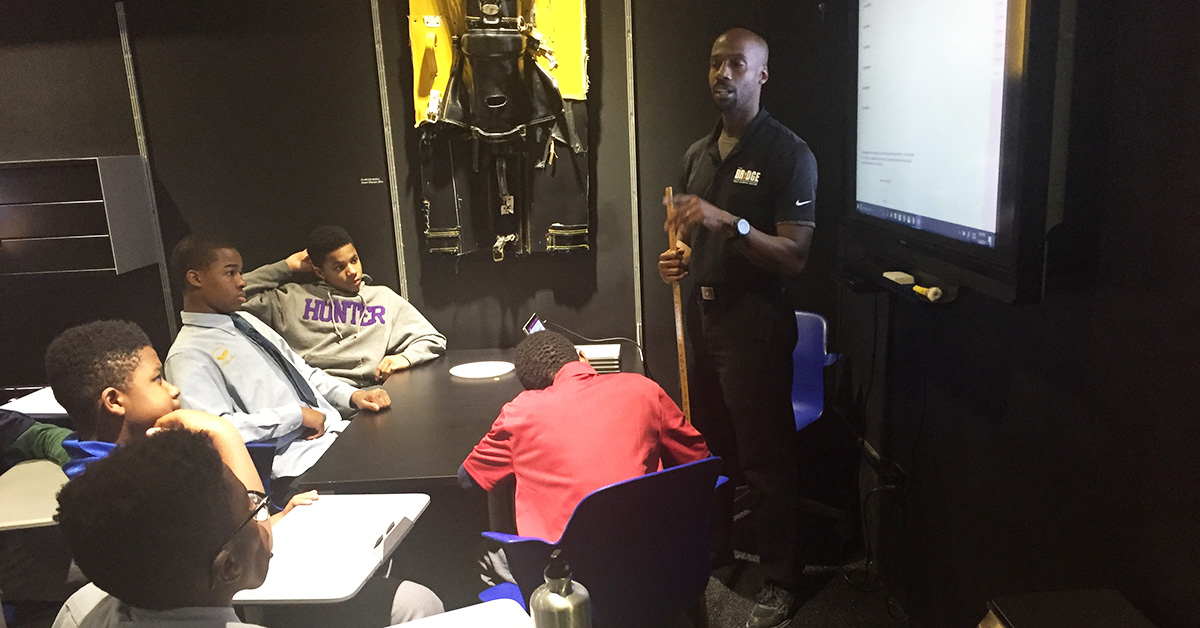
Herbert Brown with our middle school students during a recent lesson on energy.
Future citizens and scientists alike need to understand energy production and its effect on the environment.
With that fact in mind, STEM Program Co-Leader Herbert Brown recently led a lesson about energy sources with our after school students. They set out to create a scale, using the sun as a baseline, to measure and compare energy sources and their impact on the world we live in.
The students discussed the sun, nuclear reactors, windmill farms, solar panel fields, coal plants and more. As they researched the power output of the sun, they quickly realized the difficulty of using such a powerful energy source as a baseline. Because the power of the sun dwarfs anything else in our solar system, comparison was tough.
But the discussion was lively, and our students began brainstorming topics for our second annual Water Fair, scheduled for March 24. Two of their ideas: thermal heating of water to cut dependency on coal and gas, and using the effects of climate change to assist in alternative energy sources like windmills. Blake Wilson was particularly interested in the warming of the oceans and how that affects marine life. He talked about creating a device that could siphon excess thermal energy from the ocean.
Students learned about the dangers of nuclear power and fossil fuels and agreed on the need to shift our dependency to different energy sources. Everyone agreed that the sun should be our chief source of energy, and that more effort should be put toward harnessing its power.
In the end, the students were unable to create the scale they set out to create, but they still learned a lot and took the conversation in an interesting direction, proving that STEM learning can happen even when the lesson doesn’t go exactly as planned.